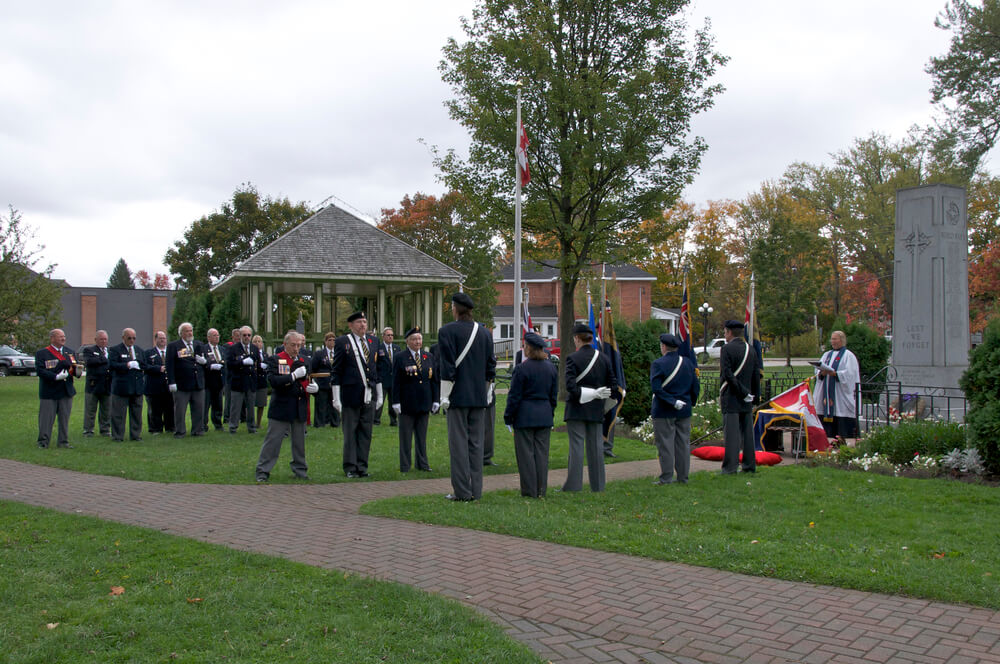When you think of veterans on Remembrance Day, what images come to mind? For many Canadians, it would be a visual of the veterans from the World Wars. However, this image does not reflect the vast majority of today’s veterans.
Canada has almost half a million veterans and approximately 66 per cent of them are 55 years of age or older. Only a small fraction are veterans of the Second World War or the Korean War.
Without an updated understanding of who our veterans are and the challenges they face, we cannot fulfill our duty to support their wellbeing as they age.
A new report, Addressing the Coming of Age and its Related Complexities Among Canada’s Veterans, highlights that the nature of the military service for today’s veterans has been vastly different from previous generations of veterans, exposing them to different stressors.
Most of today’s veterans served in the military after 1954, engaging in peacekeeping and combat roles overseas — including in the former Yugoslavia, Rwanda and Afghanistan — and providing aid at home during natural disasters and emergencies, including supporting long-term care (LTC) homes early in the COVID-19 pandemic.
Compared to the general population, Canadian veterans released between 1998 and 2018 report higher rates of chronic pain, physical activity limitations, anxiety, depression and post-traumatic stress disorder (PTSD). There is increasing evidence that trauma and PTSD may worsen health, which could put Veterans at risk of developing chronic diseases and becoming frail.
For veterans who are women, Indigenous, racialized or members of the 2SLGBTQIA+ community, experiences of sexual abuse, harassment or systemic discrimination while serving in the military can further contribute to or aggravate future health issues.
These health challenges can make ageing at home more challenging, especially if veterans do not have access to family or friends for support.
While veterans’ spouses and partners play a critical role in assisting them with daily living activities, almost a quarter of veterans live alone. This raises concerns not only about social isolation, but also the ability of veterans living by themselves to manage in their own homes as they age.
Recognizing the changing demographics of veterans, we need to ensure that we have the most appropriate programs and services in place to meet their needs as they age.
Veterans Affairs Canada has long provided support to help veterans remain in their own homes for as long as possible, including providing financial support for housekeeping, meals, grounds maintenance and personal care services. This not only benefits veterans, it is less costly than providing care for them in LTC homes.
To keep up with changing needs, it is time to evolve these programs, including adding more mental health supports tailored to older veterans’ needs. We also have to ensure that programs and services recognize and respond in a culturally safe way to the needs of marginalized groups of veterans.
It’s time to consider alternatives to traditional LTC homes. For example, an innovative program in the United States allows veterans who are no longer able to care for themselves at home to live in another private residence under the care of a trained caregiver. This is a great example of an innovative way to delay or prevent LTC home admissions.
Furthermore, more education of health care providers can help them recognize and better respond to the unique health challenges veterans experience.
Just as importantly, we need to focus on identifying issues in military service that can accelerate aging and frailty and make changes to prevent or delay these problems from arising.
The insights we gain from new approaches to veterans’ care will not only benefit veterans; they can be applied to all Canadians as they age, helping them remain healthy and able to live at home longer.
It is time to appreciate that today’s veterans differ from previous generations and honour their service by implementing the right supports to meet their needs as they age.
Photo courtesy of DepositPhotos





